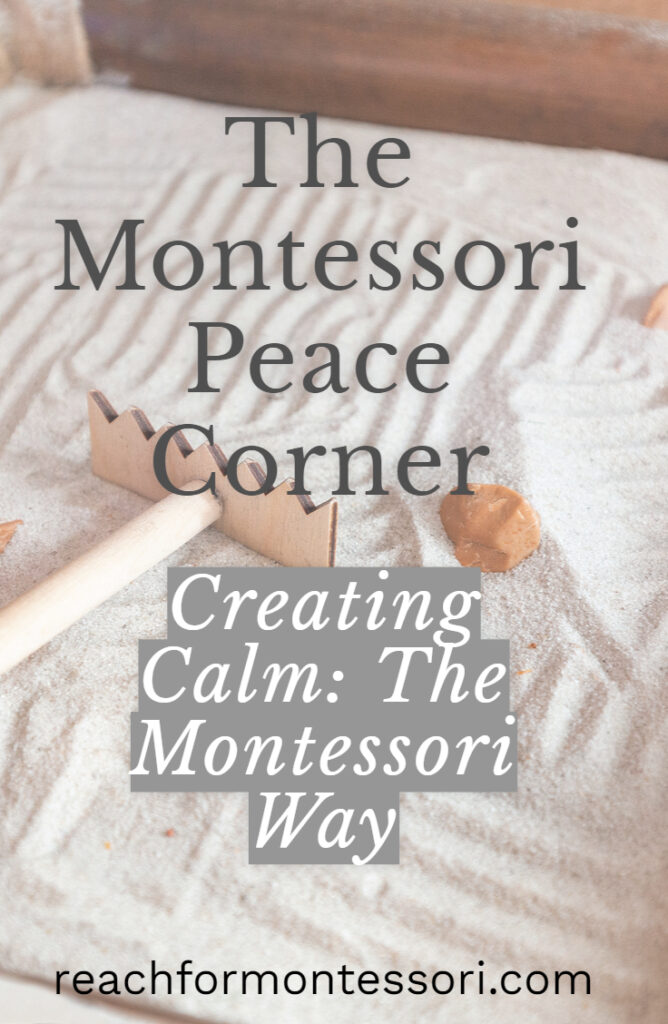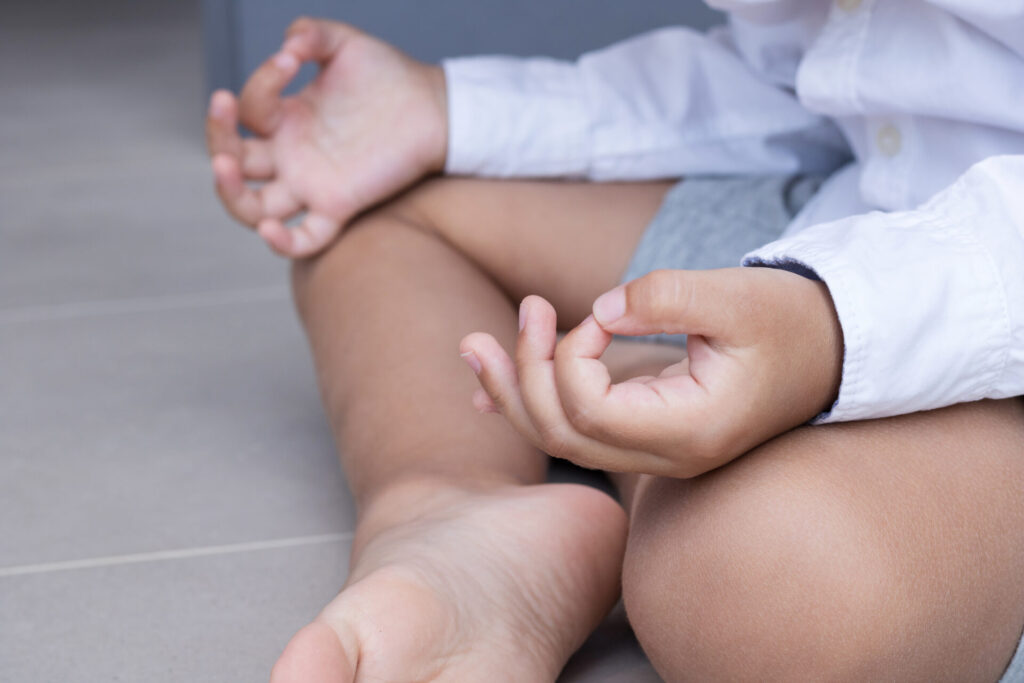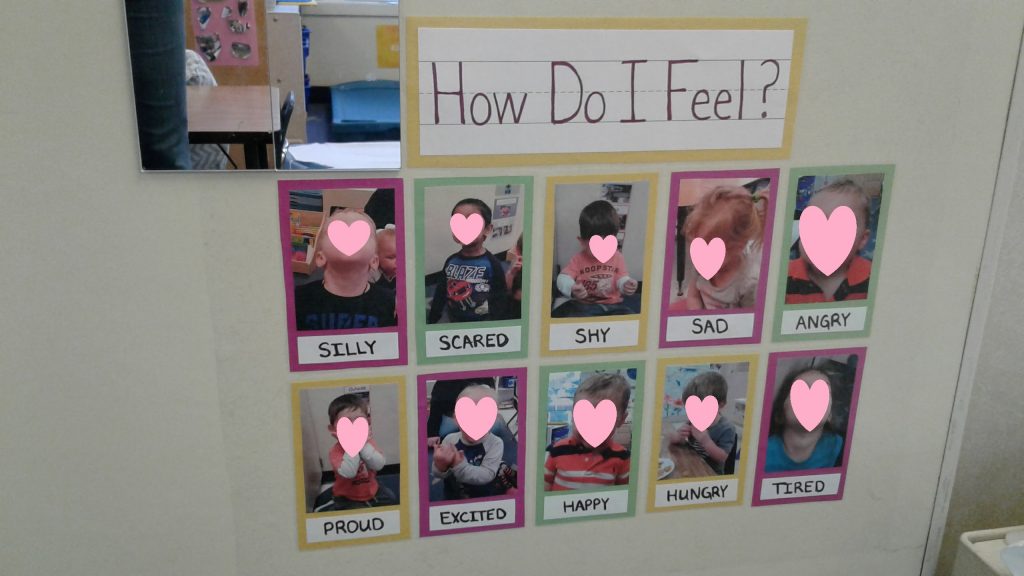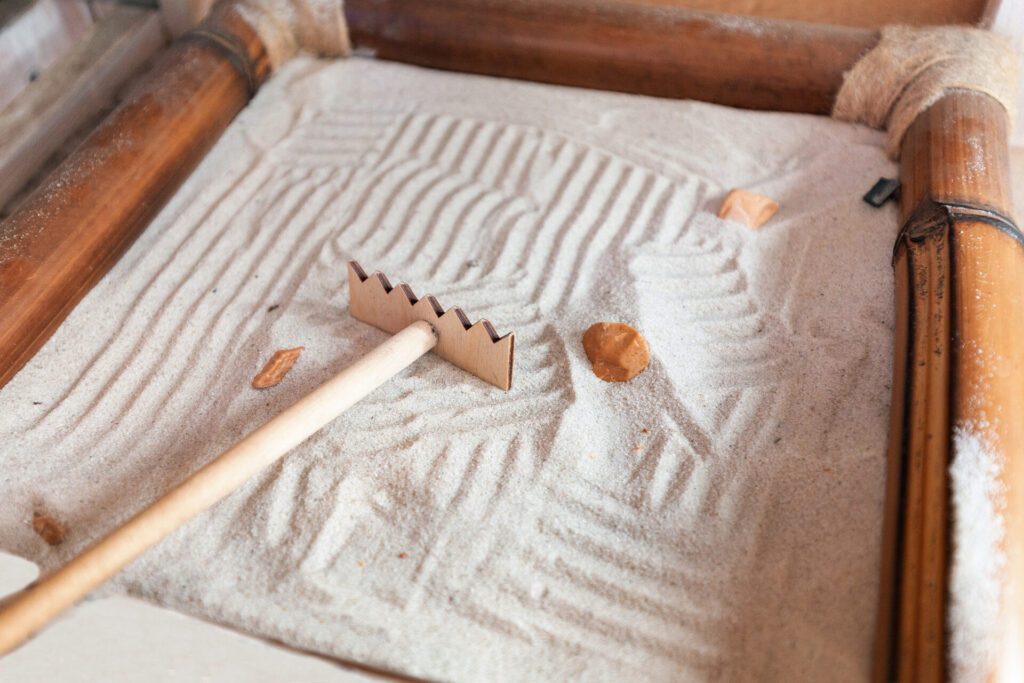In this article, you will learn what a Montessori Peace Corner is, how it benefits families to have one in the home, how to create your peace corner, what supplies you need for your peace corner and some strategies on implementing it.
What is a Montessori peace corner?
Peace corners, sometimes called calm down corners, and peace tables are Montessori mainstays.
They can be found in the Montessori classroom and Montessori homes all over the world.
In Montessori schools, peace education is woven throughout the curriculum.
Peace and order, Cosmic Education, Grace and Courtesy, social-emotional learning, and conflict-resolution skills are all promoted in the Montessori environment.
These concept areas are not limited to the Montessori classroom and the Montessori home, however.
Many traditional daycare and preschool classrooms utilize the peace table and calm down corner, as well.
These spaces are designed to provide calming alone time for young children who are experiencing big emotions or whose nervous systems are overwhelmed by outside stimuli.

(This post contains affiliate links. Purchasing from these links costs you nothing extra, but sends a few cents our way for website upkeep.)
A calm-down corner (peace corner) can be useful for a child in the following situations
- too much screen time
- background noise/noise is overstimulation
- living area is too bright
- needs a break from a group activity
Peace corners are helpful for all children, however, they can be especially helpful for children that have special sensory needs.
Characteristics of a peace corner
- structured
- private
- safe
- quiet
- calm
- softly lit (when possible)
It is important to note that peace corners, though they provide solitude and privacy for young children, are not the same thing as ‘naughty steps' or time-out areas.
These areas are safe spaces where children choose to go when they need to process their big feelings in a safe space.
Connection and coregulation are vital to a child's development of emotional intelligence and self-regulation.
Providing an area for meditation and reflection does not mean that a child should be sent to the area in the midst of emotional dysregulation.

Why every home should have a calming area
Gentle parenting and positive discipline in the home have taken front and center recently – and for good reason.
The encouragement of emotional intelligence is not something to leave solely up to care centers and schools.
Strategies to promote social-emotional health should be implemented from the moment a child wakes in the morning.
Young children are learning to self-regulate their emotions throughout the day, every day.
A peace corner is one of many positive parenting tools parents can implement at home.
Having this calming area in your home, as well as at school, shows your child that calming strategies can happen anywhere.
Eventually, your child will learn that the strategies for self-awareness and calming they use in their peace corner can be used anywhere they go.
Peace corners promote self-awareness for parents, as well.
After you have set up your child's calming area and discussed some calming strategies with them, a parent is often confronted with new emotions when their child requests to go to their quiet area to calm down.
It is normal to feel uncomfortable when your child begins to demonstrate the skill of self-soothing.

Does this mean my child does not want me for comfort anymore?
Is it normal for a child to leave a fun group activity in favor of playing alone?
Why do I feel uncomfortable that my child is able to make the choice to help themselves to peace and quiet without my help?
These are productive thoughts and coming up with the answers to these questions can help parents and caregivers put their role in a child's upbringing into perspective.
Helping children develop healthy coping mechanisms for stressful situations is one of the goals of gentle, positive parenting.
When your child demonstrates a move toward competence in this area, it can feel a little uncomfortable and that's ok.
How to create your Montessori peace corner
When setting up a calm, safe place in your home for your child, the items you select for the space play an important role in the efficacy of the space.
Having a calm area with calming activities is the objective of a Montessori peace corner.
It's important to involve your child in selecting peace corner items and discussing strategies to implement while they are calming down in their special area.

Items to consider for your calming corner
- sand timer
- squishy ball
- sensory bottles
- glitter ball or glitter jar
- mirror
- flower
- small blanket (weighted blanket, if recommended by a pediatric professional)
- rake and sand (Zen garden)
- paper and crayons
- emotions chart
- throw pillows
- play dough
- small basket of the child's favorite things (especially helpful for a child with an intense interest)
- books
- sticky contact paper
- visual reminders of calming strategies
- stretchy string
- sensory toys for chewing
- sound blocking headphones
- a feather
- white noise
- child's yoga ball
- kazoo (soothing vibrations)
If your child has a certain sensory or schematic play need, that should be taken into consideration and accommodated for.
Books to consider including in your peace corner
- The Mindfulness Coloring Book for Children by The Future Teacher Foundation
- What Does Peace Feel Like? by Vladimir Radunsky
- Whoever You Are by Mem Fox
- The Peace Book by Todd Parr
- Somewhere Today: A Book of Peace by Shelley Moore Thomas
Strategies for implementing your new peace corner

When you have set up your calming area, it's time to go over some calm-down strategies with your child.
You may have to go through several different calming activities before you find one that works for your child.
Also, over time and across different situations, a child's needs can vary.
It's important to observe your child to see if calming strategies are not working for every situation or if they do not help at all anymore.
Calming corner activities
- The Silence Game
- yoga (Sleepy Lion is one of many great calming poses)
- practicing faces/emotions in a small mirror
- breathing exercises
- affirmation relaxation techniques
- feather blowing
- raking sand (Zen garden)
- softly singing calming song of choice
- stretching
- flower arranging
- deep pressure (Occupational Therapy strategy, requires caregiver)
- finger painting
- heavy work
- process art
- humming
Cultural consideration: If you choose to implement a Zen garden, here is information on Zen gardens and their history to incorporate when you introduce the activity. For yoga information to present to your child, click here.
Conclusion and personal experience
Observing my own children at home, I have noticed a pattern in their interaction with me and each other.
At a certain point in their/our interactions, there is a point where they naturally withdraw a bit from the activity.
They are not done with the activity; they just need a break to be alone for a little while. They will go quietly to do their comforting activity, then return.
One of my children has Sensory Processing Disorder and this ‘reset period' is critical for him. I have found that he prefers his own room to the peace corner.
The light is dimmer, his massive collection of Schleich dinosaurs is there, and it's set away from our home's main living space. This is where he finds his peace and that's ok.
Following your child means making adjustments for their needs.
If you are implementing a peace corner in your classroom, home care center, or if you are a caregiver with multiple children in your home, each child should have their own basket, special for their specific sensory/calming needs.
Do you have a peace corner in your home? If so, does your child find it helpful?
Cheers and don't forget to subscribe!
